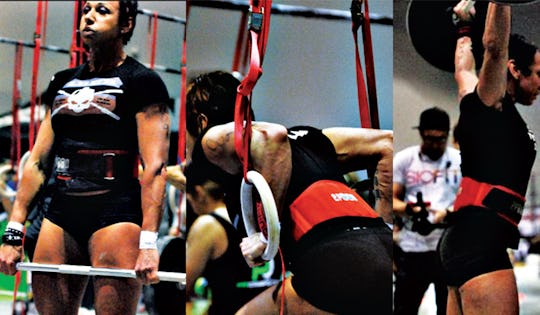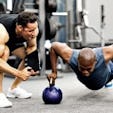The person who came up with the saying, “ Age is just a number,” was probably some young smart-ass in their twenties.
Tell my aching ligaments and joints that “age is just a number” and watch as my bones and muscles rip through my skin and punch you in the face.
I do not have a PhD, I am not an MD, I may have a mild case of OCD, but that’s a different topic altogether. I do not need a medical diploma on my wall to tell me how my body feels as I enter my mid-forties. I have read hundreds of articles on workout plans, articles on how to “get fit and lose belly flab,” or “get ripped and toned by summertime,” blah, blah, blahhhh…….
These topics, along with the attached photos of skinny chicks lifting 8lb dumbbells, is not what I consider “informative” or attractive. Topics that interest me are articles on how men and women over the age of forty continue to exercise while having to deal with an injury. Speaking first hand, I suffer with a variety of back and spinal issues: severe arthritis in my lower back,Spondylolisthesis L5-S1; degenerative disc disease L4-L5 AND L5-S1, which essentially means that I will need Spinal Fusion Surgery in the very near future.
Again, you do not need to hold a medical degree to realize that the words you can hardly pronounce are the words that mean, “Damn, that must really hurt!” So, how do I compete on a competitive level and manage to train while suffering with such issues? I train smarter NOT harder. Here are 10 tips.
Injury Management Tip #1: If it hurts, STOP!
The first thing I tell people when it comes to training with an injury is, if you are performing a movement that is causing you pain, either stop doing it, or lighten the load by a significant amount.
Injury Management Tip #2: STRETCH!
I usually take 25 – 30 minutes to stretch and warm up before I start any of my lifts or my workouts. Most mornings it takes me the same amount of time to get out of bed and stand upright (I try to stay away from words like “stand- ing erect”).
Injury Management Tip #3: Give Yourself More Rest Days
There was a time, not too long ago, where I did three workouts in one day and only took one day off to rest. It only took a year for me
Injury Management Tip #4: Get a Massage
See a physiotherapist/massage therapist/osteopathic doctor/chiropractor/witch doctor/ your old Aunt Olga from the old country who has some crazy homemade remedy/ bribe your significant other with sexual favors if he or she gives you nightly full body rub downs/ or anyone that knows how to deal with sports-related injuries.
Injury Management Tip #5: Nutrition
If you don’t know what or how you should eat by now to stay healthy, you’ve either brainwashed yourself into thinking that McDonald’s has a “healthy menu” or you are just too lazy to educate yourself.
Injury Management Tip #6: Supplements
I wish I started using fish oils a long time ago. Omega 3 fats help reduce all the things I suffer with, including reducing inflammation, pain and stiffness associated with arthritis, and increasing calcium absorption in your body. If that doesn’t work, a bottle of vodka helps kill the pain but can eventually lead to other issues, so I do not recommend you do that.
Injury Management Tip #7: Hire a Trainer
If your trainer is squeezing pimples on his face and gives you an update on the last episode of Jersey Shore, you can safely conclude that he is not the right person for you. I typically tell people to use the trainer or coach who has the BEST reputation and has proven time and time again that his or her clients/ students have had the best results.
Injury Management Tip #8: Proper Programming
Program your workouts for your specific needs. Most importantly, make sure you are performing these exercises with strict form and proper technique.
Injury Management Tip #9: Downsizing
I’ve had to sacrifice some of my favorite lifts since they were causing me discomfort, but instead of stopping altogether, I still go through the movements using just the weight of the bar.

)





